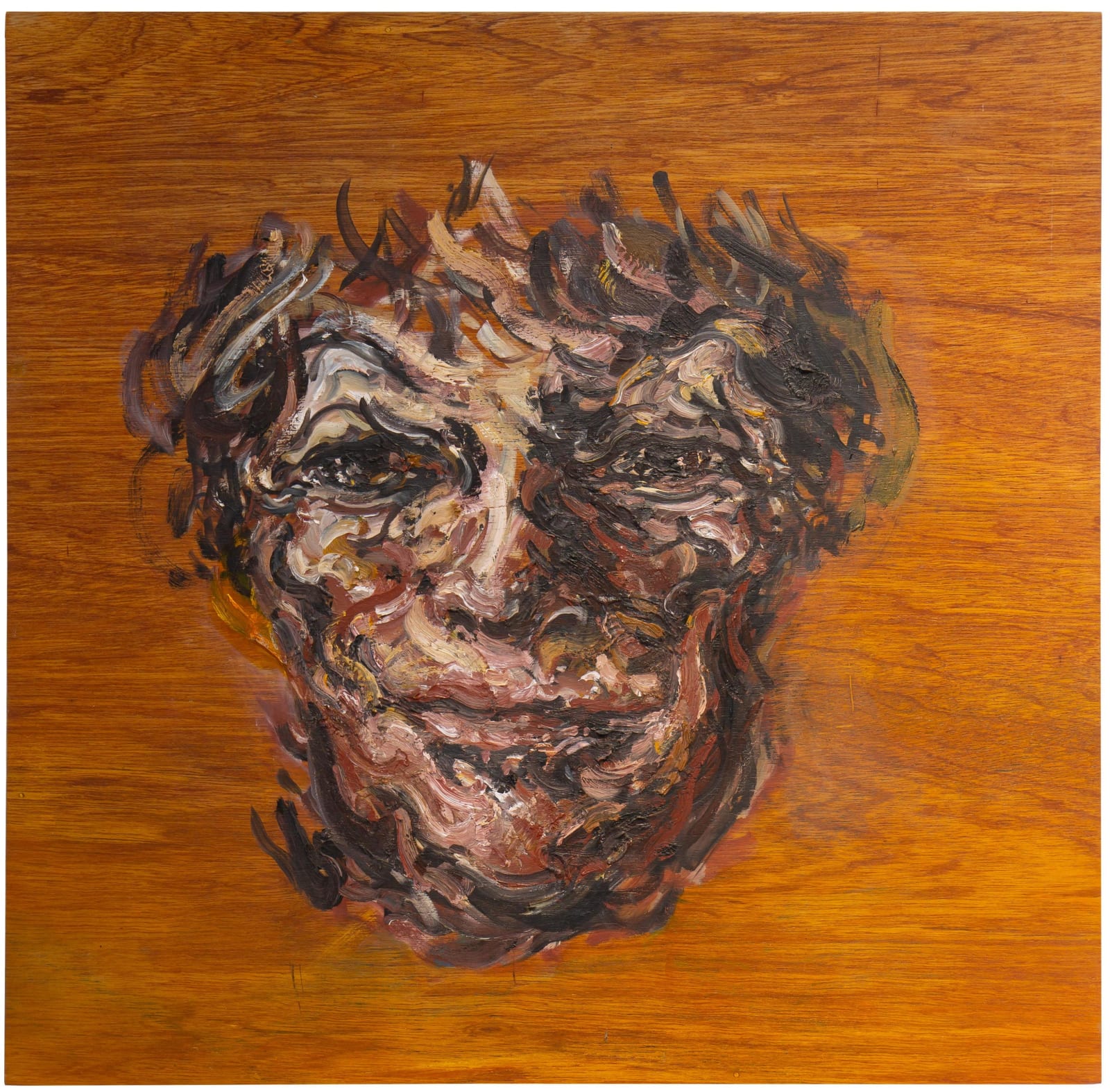Maggi Hambling UK, b. 1945
Henrietta Mask, 1999
oil on wood
53 x 54 cm
© Maggi Hambling
Further images
Henrietta Morase was a British artists' model and memoirist. During the 1950s and 1960s, she was the muse and inspiration for many artists of the Soho subculture, including Lucian Freud,...
Henrietta Morase was a British artists' model and memoirist. During the 1950s and 1960s, she was the muse and inspiration for many artists of the Soho subculture, including Lucian Freud, Francis Bacon, and (much later) Maggi Hambling.
'My Spirited Model', by Maggi Hambling:
Henrietta's eyes looked into one's soul, at the same time exposing her own. She posed for me most Mondays for the last seven months until two days before she died.
However arthritic or, on occasion, hung over, she courageously climbed onto the table, raw, intense, vulnerable and commanding. I became her subject rather than she mine. Her inspiration for me was a powerful mixture of attack, encouragement and wit her defiant spirit of rebellion. After a day's work we walked the dogs in Battersea Park. Her constant companion, the distinguished dachshund Max, propelled himself along the ground in pursuit of my terrier Percy.
On Wednesday morning her front door was for once jammed, and from the bathroom window she enjoyed complaining how ludicrous it was that she couldn't get out. Max was lowered in a travelling bag on a length of electric cable and Henrietta then challenged me to enter the house through a very small high window.
In her room, from her bed, she asked how long before he died Oscar Wilde had said those funny things. I said the exact timing of the 'wallpaper' remark was unknown. She quoted it perfectly. I furiously said she needed medical help. She responded by demanding I calm down, give her a hug and another cigarette. She died in an instant, joking to her doctor on the telephone.
She was the most glamorous corpse I've ever seen. I miss her profoundly, but Max's fleas are safe with me.
'My Spirited Model', by Maggi Hambling:
Henrietta's eyes looked into one's soul, at the same time exposing her own. She posed for me most Mondays for the last seven months until two days before she died.
However arthritic or, on occasion, hung over, she courageously climbed onto the table, raw, intense, vulnerable and commanding. I became her subject rather than she mine. Her inspiration for me was a powerful mixture of attack, encouragement and wit her defiant spirit of rebellion. After a day's work we walked the dogs in Battersea Park. Her constant companion, the distinguished dachshund Max, propelled himself along the ground in pursuit of my terrier Percy.
On Wednesday morning her front door was for once jammed, and from the bathroom window she enjoyed complaining how ludicrous it was that she couldn't get out. Max was lowered in a travelling bag on a length of electric cable and Henrietta then challenged me to enter the house through a very small high window.
In her room, from her bed, she asked how long before he died Oscar Wilde had said those funny things. I said the exact timing of the 'wallpaper' remark was unknown. She quoted it perfectly. I furiously said she needed medical help. She responded by demanding I calm down, give her a hug and another cigarette. She died in an instant, joking to her doctor on the telephone.
She was the most glamorous corpse I've ever seen. I miss her profoundly, but Max's fleas are safe with me.
















